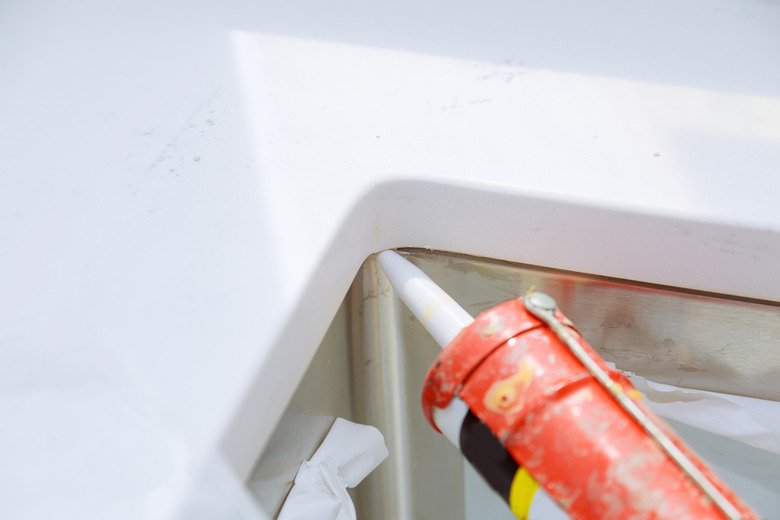How To Fix Sticky Silicone Caulk
We may receive a commission on purchases made from links.
When silicone caulk behaves like it's supposed to, it becomes totally waterproof (or "cures") within 24 to 48 hours. The result is a clean and smooth line of caulk that's not sticky or tacky to the touch. Unfortunately, sometimes a batch of silicone caulk can go bad and simply won't dry or cure, and you likely found out the hard way that you bought one of these bad batches. Instead of staying clean, the sticky silicone caulk will attract all kinds of dirt and pet hair, making the caulk line look dingy and disgusting.
However, before you get too frustrated, keep in mind that sticky silicone caulk might just need extra time to cure, especially in certain environmental circumstances. Give it anywhere from 48 hours to 10 days to cure. If it doesn't cure, there are ways to set yourself up for success with future caulking projects.
Cleaning Up Excess Silicone Caulk
Cleaning Up Excess Silicone Caulk
To fix sticky silicone caulk, it's best to start over with a fresh batch of caulk that hasn't yet expired. Remove as much of the old sticky silicone caulk as possible with a putty knife or other scraper. Then, apply a product like Goo Gone or denatured alcohol to lift the remaining silicone residue, which can then be scraped again or wiped up with a paper towel. When the site is completely dry and debris-free, you can add silicone caulk from a fresh tube.
Keep in mind that Goo Gone and other silicone caulk removers have very powerful smells and should only be used in well-ventilated conditions. Open a window, turn on a fan, and wear a respirator, eye protection and gloves as additional safety measures.
Reducing Silicone Caulk Curing Time
Reducing Silicone Caulk Curing Time
It seems counter-intuitive, but according to Silicone Depot, silicone caulk actually dries faster when there's more moisture in the air. Therefore, you might be waiting a lot longer for silicone caulk to cure in the winter than during a humid summer. The average indoor temperature (around 72 degrees Fahrenheit) is ideal for curing all types of caulk, but when working outdoors, try to apply caulk when the temperatures will remain between 40 and 80 degrees Fahrenheit for several days to ensure it cures quickly.
Avoid the temptation to blast the caulk with a hair dryer or set up a fan. The heat from the hair dryer could melt the silicone, and air circulation reduces the cure time for acrylic caulk but not for silicone caulk.
Preventing Messy, Sticky Silicone Caulk
Preventing Messy, Sticky Silicone Caulk
An easy trick will help you caulk straight lines every time without leaving a messy, sticky residue when smoothing the caulk. Simply protect the surrounding area with painter's tape or masking tape. This will not only help you create a straight line with the caulk gun but will also prevent any sticky spots from forming if the caulk spills over. When you smooth out the caulk line, it can be easy to create a track of caulk that's too wide. The tape will keep the final result narrow and straight.
Press the tape firmly to prevent any caulk from getting underneath it. Allow the caulk to dry for about an hour so that it forms a "skin" and then lift the tape. Waiting too long to lift the tape could make it more difficult to remove.
